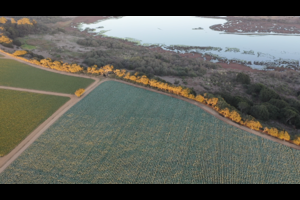
Sustaining Groundwater in Salinas Valley
BACKGROUND AND CHALLENGES
In 2014, California passed the Sustainable Groundwater Management Act (SGMA), which requires that depleted groundwater basins reach sustainable water supply conditions within 20 years. As the first step, the state required that stakeholders form groundwater sustainability agencies by 2017. These agencies must report on groundwater use annually and develop sustainability plans within five years. The agencies may enact fees, establish regulations, and curtail groundwater pumping.
Located on Monterey County’s central coast, the Salinas Valley basin—prime agriculture land in overdraft condition—must comply with the new law. Agriculture contributes approximately $4.49 billion per year to Monterey County’s economic output, with a total estimated impact of $8 billion on the local economy. Nearly one household in four relies on income related to agriculture (Monterey County Farm Bureau). The Salinas Valley, in turn, relies almost completely on groundwater for its water supply. Stakeholders across the Salinas Valley, including representatives of county and city government as well as the agriculture industry, collaborated on the framework for a groundwater sustainability agency.
THE CBI APPROACH
The nascent Salinas Valley group hired CBI to conduct a stakeholder issue assessment, design a collaborative process, and facilitate meetings among diverse stakeholders to build consensus for structuring the new agency. CBI senior mediators first conducted an issue assessment, interviewing stakeholders across interest groups and soliciting input via an online survey.
CBI presented the findings at a meeting of 100 interested parties. The report included recommendations for convening the groundwater stakeholder forum and a small collaborative working group to vet proposals for reaching consensus on the new agency’s structure. CBI worked with stakeholders to identify 25 individuals representing agriculture, urban, environmental, government, and disadvantaged community interests to develop the recommended proposals. Through numerous meetings, the group developed a consensus on a governing structure unique in California. There were seats for governmental and non-governmental entities, and the voting was tailored to address demand and achieve sustainability. CBI developed a communication plan to raise awareness and solicit feedback about the approach throughout the county, including specialized outreach in Spanish.
RESULTS
Because of this effort, the Salinas Valley Basin Groundwater Sustainability Agency (SVBGSA) will serve most of the basin in Monterey County, bringing together agricultural and urban interests. (The SVBGSA will form coordination agreements with two additional small agencies in the basin that have decided to remain independent.) CBI will continue working with these diverse stakeholders to develop and implement a groundwater sustainability plan.

